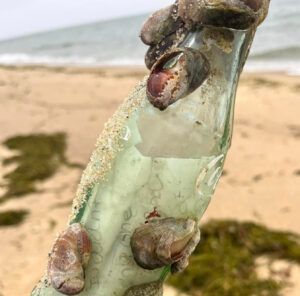 HYANNIS – The saying goes that a dog is a man’s best friend. While dogs can be loyal companions, there is a bit of risk to the relationship.
HYANNIS – The saying goes that a dog is a man’s best friend. While dogs can be loyal companions, there is a bit of risk to the relationship.
Records show that there about 4.5 million dog bites in the U.S. each year, and about one in five bites becomes infected, according to the Centers for Disease Control and Prevention (CDC).
We asked two local experts for some tips on treating and preventing dog bites.
“Parents unwittingly set their children up for dog bite injuries because society retains an outdated paradigm about dogs, believing that good dogs love everyone and only bad dogs bite,” said Melissa Berryman of Falmouth, author of “People Training for Dogs: What Breeders Don’t Tell You and Trainers Don’t Teach,” and a former animal control officer.
“Dogs bite due to situation and context. Often we don’t understand their point of view or respect their limitations as animals.”
There can be a wide range of injuries from a dog bite, according to Nate Rudman, MD, an emergency physician at Cape Cod Hospital.
“It can be a little abrasion, which you don’t have to see anyone about. The other end of the spectrum is where someone’s scalp is eviscerated or there is a major vascular injury that requires surgery,” he said.
For a scratch, the best treatment, according to the CDC, is to wash the wound thoroughly with soap and water, apply an antibiotic cream and cover the wound with a clean bandage. See a healthcare provider if the wound becomes red, painful, warm, or swollen; if you develop a fever; or if the dog that bit you was acting strangely.
“Anytime the bite is a penetrating puncture wound, you need to get seen at either the urgent center or the ER,” said Dr. Rudman. “The more minor the bite, the more likely the urgent center is fine. The more complicated it is or involved – if there’s any question of a tooth being broken off or a foreign body or bone or tendon involved – then probably the ER is more appropriate.”
A puncture wound introduces bacteria into the body, which can be dangerous, he said.
“Anytime someone is sick after a bite – if they get a fever or they’re systemically sick – they need to go right to the ER,” he said.
If you can’t verify the rabies vaccination status from the dog’s owner, it’s best to go to the ER, since urgent care centers don’t stock the immunoglobulin that gives you immediate protection, he said.
Tips From A Trainer
As for preventing a bite in the first place, Berryman offered some easy tips to keep your child safe.
- Act friendly: “Smart dogs know strangers can hurt them, so act like a friend. Teach children to relax, use a high pitch voice and tap the side of their leg to signify they are a friend and not foe or prey. Dogs respond to how your child is acting.”
- Ask the dog: “We are strangers to dogs we are meeting for the first time. A stiff fist or hand toward a dog is offensive to them and offers negative information about your child. Tapping allows a dog to state decisively if it wishes to be bothered.”
- Pay attention: “Dogs are wired to capitalize on opportunity. Adults must actively supervise. The majority of dog bites occur when adults are not present or aren’t paying attention. When adults are present, often the dog defers to the adult. When leaving a room, the adult should take either the dog or the child with them.”
- Never hug a dog: “While considered a positive gesture by us, dogs never hug to show affection. For them, it is a negative dominating gesture. Encouraging kids to hug a dog sets your child up to be bitten in the face. Dogs often stiffen as a sign to say they don’t like something or they feel threatened. People have not been taught to adhere to these subtler warnings and bites often result.”
- Know your child’s place: “Dogs interact with people and animals they know depending on rank. If your child is above it in status in the dog’s mind, the dog does not have enough power and must tolerate or submit. If a dog is above your child in status and your child steps out of line, it is normal for them to correct your child with a growl, nip or bite.”
- Avoid running: “Instincts are very powerful and many dogs cannot control their impulse to chase someone who is running, biking or skating. Often owners have not learned how to control their dogs from acting on instinct and are caught unawares. Teach your child to avoid running by or with dogs. Don’t expect a dog to ‘know’ not to chase or bite your child.”
The bottom line, she said: Never assume that a human gesture’s meaning is understood by a dog.
























